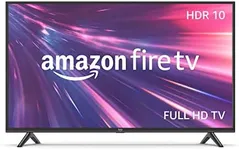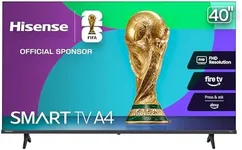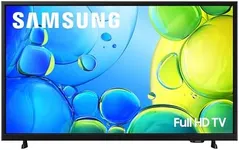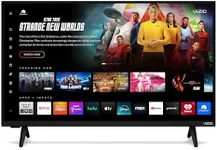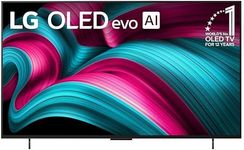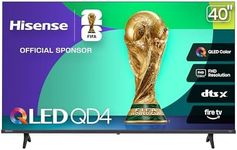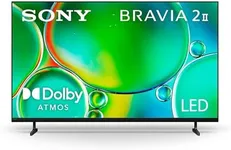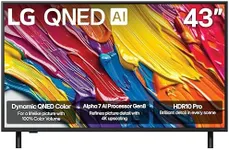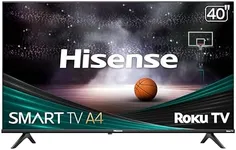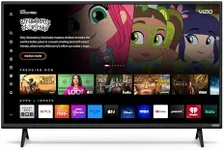Buying Guide for the Best 40 Inch Smart Tvs
Choosing the right 40-inch smart TV can significantly enhance your viewing experience. When selecting a TV, it's important to consider various specifications that will impact picture quality, sound, connectivity, and overall performance. Understanding these key specs will help you make an informed decision that best suits your needs and preferences.ResolutionResolution refers to the number of pixels that make up the picture on the screen. Higher resolution means more pixels and a clearer, sharper image. Common resolutions include Full HD (1080p) and 4K (2160p). If you watch a lot of high-definition content or use streaming services that offer 4K content, a 4K TV would be a better choice. For regular TV watching and standard content, Full HD may suffice.
Smart TV PlatformThe smart TV platform is the operating system that runs the TV's smart features, such as apps and streaming services. Popular platforms include Android TV, Roku TV, and proprietary systems like Samsung's Tizen or LG's webOS. Choose a platform that offers the apps and services you use most frequently and has an interface you find easy to navigate.
Refresh RateRefresh rate is the number of times the TV updates the image on the screen per second, measured in Hertz (Hz). Common refresh rates are 60Hz and 120Hz. A higher refresh rate can result in smoother motion, which is particularly beneficial for watching sports or playing video games. If you primarily watch movies and TV shows, 60Hz is usually sufficient. For gaming or fast-paced content, consider a 120Hz TV.
HDR (High Dynamic Range)HDR enhances the contrast and color range of the TV, providing a more realistic and vibrant picture. There are different HDR formats, such as HDR10, Dolby Vision, and HLG. If you enjoy watching movies and shows with rich visuals, a TV with HDR support can significantly improve your viewing experience. Check if the content you watch supports HDR to make the most of this feature.
ConnectivityConnectivity options include HDMI ports, USB ports, and wireless capabilities like Wi-Fi and Bluetooth. More HDMI ports allow you to connect multiple devices, such as gaming consoles, Blu-ray players, and soundbars. USB ports are useful for playing media from external drives. Ensure the TV has enough ports to accommodate your devices and consider wireless options for a cleaner setup.
Sound QualitySound quality is crucial for an immersive viewing experience. While most TVs come with built-in speakers, they may not always provide the best audio quality. Look for TVs with advanced sound technologies like Dolby Audio or DTS. If sound quality is a priority, you might also consider investing in a soundbar or external speakers to enhance the audio experience.
Viewing AngleViewing angle refers to how well the picture quality is maintained when viewed from different angles. A wider viewing angle ensures that the picture remains clear and vibrant even when watching from the side. This is important if you have a wide seating arrangement or often watch TV with a group of people. Look for TVs with IPS panels or technologies that improve viewing angles.
Design and Build QualityThe design and build quality of the TV can affect both aesthetics and durability. Consider the TV's bezel size, stand design, and overall build. A sleek, well-built TV can complement your room's decor and provide a more premium feel. Additionally, a sturdy build ensures the TV will last longer and withstand regular use.


